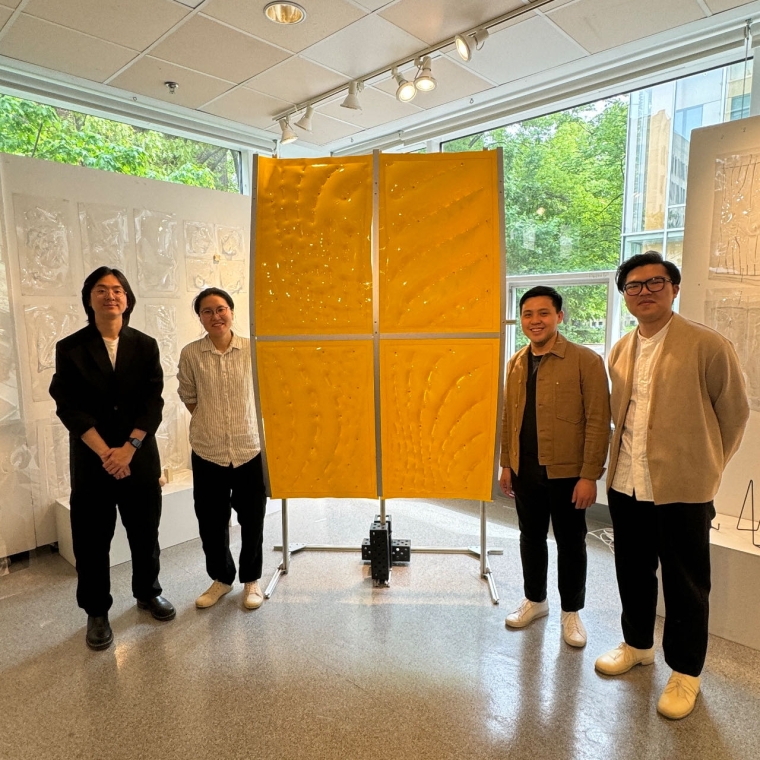Toto Tan
Toto is deeply passionate about the intersection of robotics, manufacturing, and architecture. With advanced degrees in both design and robotics, they are committed to pioneering innovative and sustainable solutions that enhance the built environment and mobility sectors.
Aero-Plastica explores an integrated approach to pneumatic thermoforming between two layers of robotically seamed PETG sheets, offering a variable manufacturing method with the potential to support custom, repeatable, and controlled fabrication of thermoplastic sheets. This method removes the constraints encountered in traditional thermoforming techniques as they require the use of molds or casts which are intensive in material, singular in geometry, and disposable. A multi-part fabricated prototype explores the potential for this method to be utilized for the production of lightweight, semi-rigid volumetric building envelope applications. A speculative architectural design of a micro-factory envelope is also developed to explore the potential for the method to produce an envelope of variably formed panels. In both of these design applications and fabrication experiments, qualitative design possibilities are also explored through the coupling of the manufacturing method with seaming patterns developed using a Grey-Scott reaction-diffusion algorithm. This algorithmic approach enables the self-organization of pattern features to produce locally varied qualities that would not be possible to achieve with mold-based thermoforming approaches.
Aero-Plastica explores an integrated approach to pneumatic thermoforming between two layers of robotically seamed PETG sheets, offering a variable manufacturing method with the potential to support custom, repeatable, and controlled fabrication of thermoplastic sheets. This method removes the constraints encountered in traditional thermoforming techniques as they require the use of molds or casts which are intensive in material, singular in geometry, and disposable. A multi-part fabricated prototype explores the potential for this method to be utilized for the production of lightweight, semi-rigid volumetric building envelope applications. A speculative architectural design of a micro-factory envelope is also developed to explore the potential for the method to produce an envelope of variably formed panels. In both of these design applications and fabrication experiments, qualitative design possibilities are also explored through the coupling of the manufacturing method with seaming patterns developed using a Grey-Scott reaction-diffusion algorithm. This algorithmic approach enables the self-organization of pattern features to produce locally varied qualities that would not be possible to achieve with mold-based thermoforming approaches.


